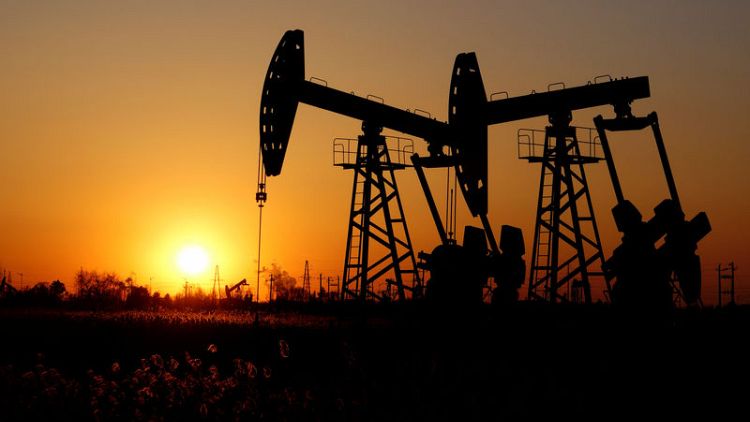By Dmitry Zhdannikov
MOSCOW (Reuters) - Crude oil prices rose on Friday, recovering from two days of declines, after data showing a rise in U.S. retail sales helped to ease concerns about a recession in the world's biggest economy.
Brent crude <LCOc1> was up 38 cents at $58.61 a barrel at 1136 GMT, after falling 2.1% on Thursday and 3% the previous day. U.S. crude <CLc1> was 18 cents higher at $54.65 a barrel, having dropped 1.4% in the previous session and 3.3% on Wednesday.
U.S. retail sales rose 0.7% in July as consumers bought a range of goods even as they cut back on vehicle purchases, Thursday's data showed.
That came a day after a sell-off in world markets that followed the U.S. Treasury yield curve's first inversion since June 2007 - a development usually seen as a reliable predictor of looming recession.
"Today, oil appears on the rise following the possibility of direct communication between U.S. President Donald Trump and Chinese President Xi Jinping," said Harry Tchilinguirian from BNP Paribas.
He said the rebound could be short-lived: "As darker clouds gather on the economic horizon, the ensuing pessimism is likely to limit financial players’ appetite for risky assets, including oil."
BNP Paribas cut its WTI forecast for 2019 by $8 to $55 per barrel and for Brent by $9 to $62 per barrel, citing slowing economy amid a U.S.-China trade dispute.
OPEC said in its monthly report on Friday that oil market fundamentals look somewhat bearish for the rest of 2019 as it trimmed its global oil demand forecast due to slowing economy.
Earlier this week, data releases included a surprise drop in industrial output growth in China to a more than 17-year low, and a fall in exports that sent Germany's economy into reverse in the second quarter.
The price of Brent is still up nearly 10% this year helped by supply cuts led by the Organization of the Petroleum Exporting Countries (OPEC) and allies such as Russia, a group known as OPEC+.
In July, OPEC+ agreed to extend oil output cuts until March 2020 to prop up prices.
"At what point will further output cuts be needed at the back end of this year from OPEC and Russia to keep things going the way they are?" said Phin Ziebell, senior economist at National Australia Bank.
A Saudi official indicated this month that more steps may be coming, saying Saudi Arabia was committed to do "whatever it takes" to keep the market balanced next year.
OPEC's efforts have been undermined by worries about a slowing global economy amid a trade dispute between the United States and China, as well as rising U.S. stockpiles of crude and higher output of U.S. shale oil.
U.S., Russian, Saudi crude oil production png - https://fingfx.thomsonreuters.com/gfx/editorcharts/OIL-PRODUCERS-BIGGEST/0H001PGD96QK/eikon.png
(Reporting by Dmitry Zhdannikov and Aaron Sheldrick; Editing by Jan Harvey and Jason Neely)



